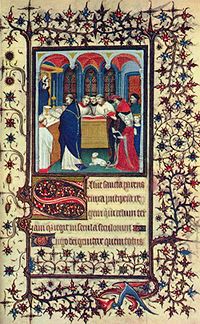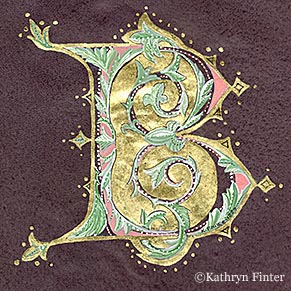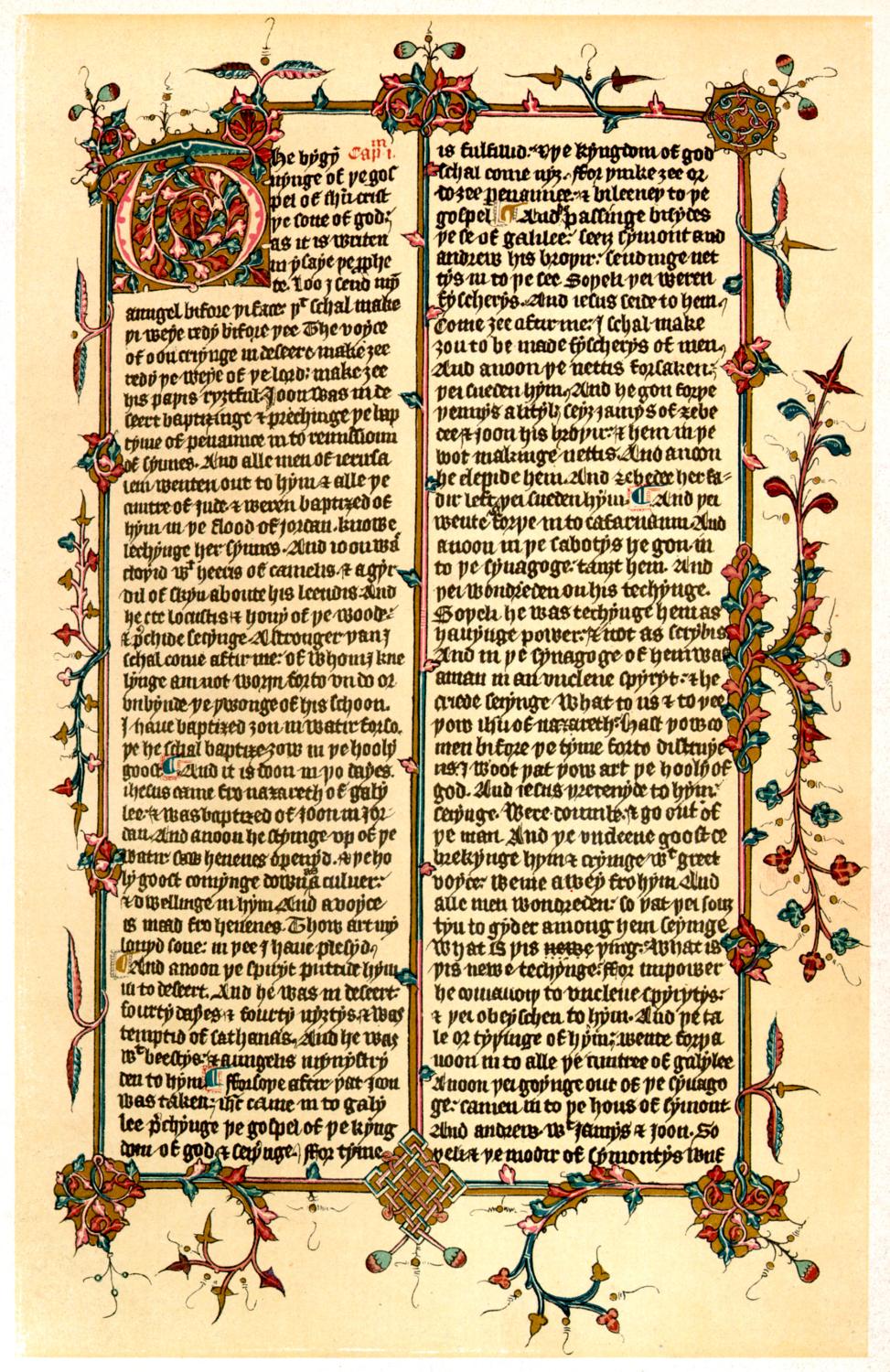Illuminated Manuscript Letters
An illuminated manuscript is a manuscript in which the text is supplemented by the addition of decoration, such as decorated initials, borders (marginalia) and miniature illustrations. In the most strict definition of the term, an illuminated manuscript only refers to manuscripts decorated with gold or silver, but in both common usage and modern scholarship, the term is now used to refer to any decorated or illustrated manuscript from the Western traditions. Comparable Far Eastern works are always described as painted, as are Mesoamerican works. Islamic manuscripts are usually referred to as illuminated but can also be classified as painted.
The earliest surviving substantive illuminated manuscripts are from the period AD 400 to 600, initially produced in Italy and the Eastern Roman Empire. The significance of these works lies not only in their inherent art historical value, but in the maintenance of a link of literacy offered by non-illuminated texts as well. Had it not been for the monastic scribes of Late Antiquity, most literature of Greece and Rome would have perished in Europe; as it was, the patterns of textual survivals were shaped by their usefulness to the severely constricted literate group of Christians. Illumination of manuscripts, as a way of aggrandizing ancient documents, aided their preservation and informative value in an era when new ruling classes were no longer literate.








No comments:
Post a Comment